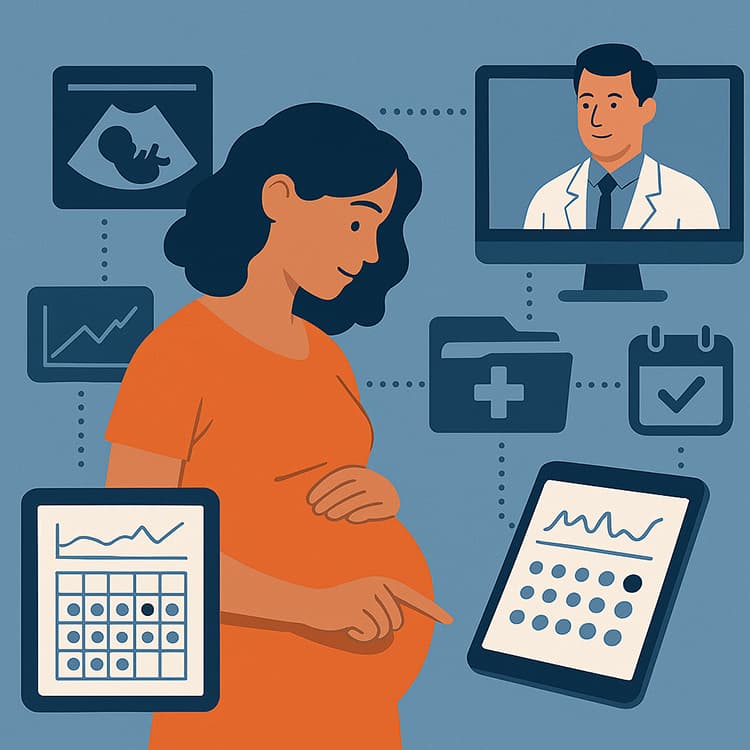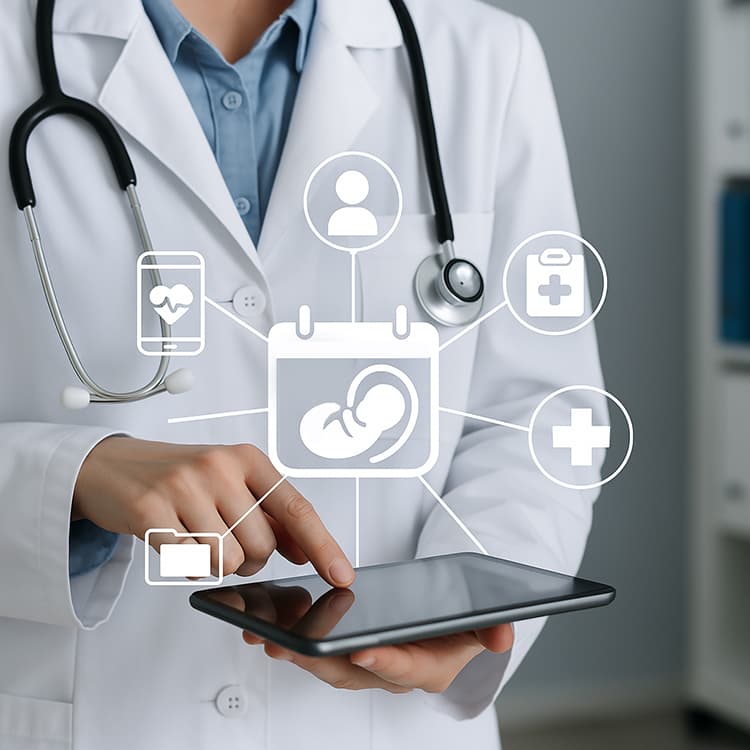Integrated Health Applications for Fertility and Family Planning

Integrated digital health platforms are revolutionizing the way fertility tracking and family planning services are delivered. These comprehensive systems merge diverse tools such as fertility tracking apps, electronic medical records (EMRs), and scheduling systems into one unified solution. As healthcare moves toward a more connected and patient-centered approach, these integrated applications are proving to be essential in enhancing clinical workflows and patient engagement. This article explores the benefits of integrated health applications, discusses the core components that form these platforms, and highlights their impact on clinical efficiency and patient satisfaction.
Introduction
The shift toward digital health solutions has been one of the most significant developments in modern healthcare. Patients and clinicians are now experiencing the benefits of streamlined communication, immediate access to medical records, and personalized treatment plans. In the realm of fertility and family planning, integrated health applications offer new opportunities for both individuals and healthcare providers. Patients can now monitor their health indicators in real time, access relevant information, and manage appointments through a single platform. Meanwhile, clinicians benefit from having all necessary data available in one secure location.
This unified approach not only simplifies the management of patient records but also supports better decision-making. For instance, when data from fertility tracking apps is integrated with electronic medical records, healthcare providers can observe trends and make timely adjustments to treatment plans. For those interested in additional perspectives on related services, detailed insights can be found on fertility clinics and parenthood services.
Digital Transformation in Healthcare
Digital transformation has reshaped many aspects of healthcare delivery. At its core, this transformation involves the digitization of records and the integration of disparate systems to create a seamless flow of information. In traditional settings, patient data was often scattered across multiple databases or stored in paper files. This fragmentation frequently led to delays in communication and potential errors in patient care. Today, integrated digital health platforms have addressed these challenges by centralizing data storage and ensuring that information is updated in real time.
One of the key advantages of these platforms is their ability to facilitate real-time data exchange. Healthcare providers no longer need to wait for information to be manually updated or transferred between systems. Instead, changes in patient status, laboratory results, and appointment details are immediately reflected across all integrated components. This instant access to up-to-date information allows clinicians to make prompt decisions that can significantly improve patient outcomes.
Furthermore, the use of cloud-based infrastructure ensures that these systems are both scalable and cost-effective. As demand grows, providers can expand their digital capabilities without the need for large upfront investments in hardware. This scalability is particularly important for fertility and family planning services, where the volume and complexity of data can vary widely. For a detailed explanation of how cloud-based systems maintain data security and integrity, you can read on the site.
Core Components of an Integrated Health Application
At the heart of any successful integrated health application lie several critical components. These elements work together to ensure that patients receive a seamless and effective healthcare experience.
Fertility tracking tools are one of the primary components. These applications allow individuals to record and monitor their menstrual cycles, ovulation periods, and other health indicators. When integrated with a broader digital platform, this data becomes a valuable resource for clinicians, enabling them to tailor treatment plans based on precise and continuous health monitoring.
Electronic medical records form another cornerstone of integrated health systems. EMRs offer a digital repository for a patient’s entire medical history, including previous diagnoses, lab results, imaging studies, and treatment regimens. When fertility tracking data is combined with EMRs, healthcare providers gain a comprehensive view of a patient’s reproductive health. This holistic perspective is crucial for identifying potential issues and providing timely interventions.
Scheduling systems also play a pivotal role in integrated applications. The ability to book appointments online and receive automated reminders has transformed how patients interact with their healthcare providers. Efficient scheduling minimizes missed appointments and ensures that clinicians can manage their workload effectively. Moreover, when scheduling is integrated with EMRs and fertility tracking tools, it creates a streamlined experience that reduces administrative burdens and allows clinicians to focus more on patient care.
Patient portals serve as the interface through which users interact with these digital platforms. A well-designed portal provides secure access to medical records, appointment scheduling, and educational resources. It also facilitates direct communication between patients and their healthcare teams, ensuring that concerns are addressed promptly and that patients remain informed about their treatment plans. This level of engagement fosters a sense of empowerment and encourages individuals to take an active role in managing their health.

Enhancing Clinical Workflows and Patient Engagement
Integrated digital health platforms bring tangible benefits to clinical workflows. By consolidating all necessary information into a single system, these platforms reduce the time clinicians spend searching for data and managing paperwork. This streamlined approach allows healthcare providers to dedicate more time to direct patient care and less time on administrative tasks.
Enhanced communication is a critical outcome of integrating multiple digital health tools. When a patient’s fertility tracking data is linked with their electronic medical records and scheduling systems, clinicians can quickly identify and address potential issues. This immediacy not only improves the quality of care but also increases patient trust and satisfaction. Patients are more likely to adhere to treatment plans when they feel that their healthcare team is responsive and well-informed.
The personalization of treatment plans is another major advantage. Integrated platforms allow clinicians to tailor interventions based on comprehensive, real-time data. For example, if a patient’s fertility tracking app indicates irregular patterns, the clinician can immediately review the corresponding records in the EMR and adjust the treatment plan accordingly. This dynamic approach to care not only improves outcomes but also ensures that patients receive the most appropriate and effective interventions.
Patient engagement is further enhanced through the use of interactive tools and educational resources. Many digital platforms provide access to a wealth of information that helps patients understand their conditions and the rationale behind various treatment options. This educational component encourages patients to take charge of their health and fosters a collaborative relationship with their healthcare providers. Engaged patients are more likely to follow through with treatment recommendations and report positive health outcomes.
In addition, the integration of scheduling systems ensures that patients can easily book follow-up appointments and consultations. This convenience plays a significant role in reducing no-shows and improving the overall efficiency of the healthcare delivery process. When patients can manage their appointments and view their medical history through a single portal, they are better prepared for consultations and more likely to engage actively in their care.
Conclusion
The integration of digital health tools into a single, cohesive platform represents a major leap forward for fertility and family planning services. By uniting fertility tracking apps, electronic medical records, and scheduling systems, healthcare providers are able to deliver more personalized, efficient, and responsive care. Integrated health applications not only streamline clinical workflows but also empower patients by providing them with immediate access to their health data and educational resources.
As the healthcare industry continues to evolve, the importance of integrated digital platforms will only grow. These systems offer a promising solution to the challenges of fragmented data and inefficient communication, paving the way for a more connected and patient-centered approach to care. By investing in these technologies, healthcare providers can improve clinical outcomes, reduce operational costs, and enhance the overall patient experience.